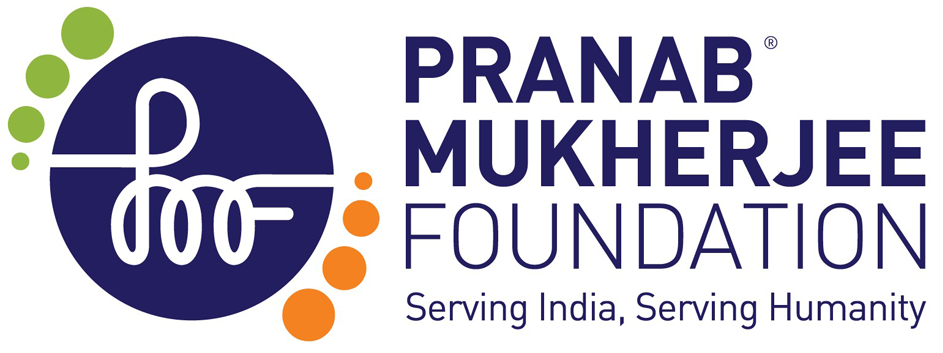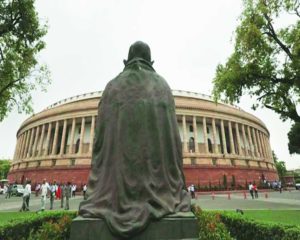Rice-Fish Farming System in India – Conservation and Promotion
Ashish Mansharamani, Abhimanyu Shrivastava, Anukriti Choubey | This article was first published in Down To Earth on Friday, 17 April 2020.
Rapid human population growth poses many challenges, especially food shortages, malnutrition, limited means of irrigation and shrinking land resources besides deteriorating environmental quality. Sustainable intensification of agricultural production systems is needed today to address the ever-increasing pressure on food and the environment.
Rice, an important food grain, roughly feeds 50 per cent of the world population. It has been identified as a major crop consuming vast chunks of available water resources while at the same time paddy fields emit a large amount of the greenhouse gas, methane.
Thus, solutions need to be sought to improve the management of rice production systems. Rice-fish farming constitutes a unique agro-landscape across the world, especially in tropical and sub-subtropical Asia.
It is no longer an agro-production practice but an agro-culture pattern. Co-culture of rice and aquatic creatures combining animal production (for example fish, shellfish, crab, shrimp and ducks) in paddy rice systems has been proposed as a technique to maximise the use of land and water resources to provide both grain and animal protein.
Today, the impact of rice cultivation on the environment, including its effect on greenhouse gases (GHGs) emission, is a matter of concern for all of us. Global climate change is closely linked to agricultural production.
Two major GHGs from agricultural sectors are methane (CH4) and nitrous oxide. Methane emission depends on anaerobic degradation of organic complexes such as plant residues, organic matter and organic fertilisers under submerged conditions where there is a lack of oxygen.
A total of 10-20 per cent of methane in the atmosphere comes from paddy fields. This is significant as the Global Warming Potential (GWP) of methane is 25 times more than that of carbon dioxide.
Research has shown that the rice-fish cultivation system is capable of lowering the emission of methane and other GHGs. Aquatic creatures especially bottom feeders (crabs and carps) disturb the soil layers by their movement or sometimes searching for food, and thus they influence the CH4 production processes.
Potentially, aquatic creatures increase diluted oxygen in field water and in soil, which shifts anaerobic digestion to aerobic digestion and helps to reduce CH4 emissions. Recently, it has been estimated that methane emission from rice-fish cultivation system is 34.6 per cent less than that from a rice monoculture cultivation system.
The method of rice-fish is also beneficial to restore soil fertility and avoid soil degradation, which is a major global environmental issue. The rice-fish system requires only a small amount of pesticide and fertiliser as it is a low input system.
The economic aspect of this system indicates that its adoption has led to an increase in the economic efficiency of farmers. According to a report, in Bangladesh, the net income return from rice-fish culture was over 50 per cent greater than that from rice monoculture.
Rice yields from the rice-fish system were 10-26 per cent higher, labour input 19-22 per cent lower and material inputs were seven per cent lower. Additionally, fish production increased net income. Indonesian figures show that the rice-fish system yielded a 27 per cent higher net return with fish, as compared to a single crop of rice.
This method ties the aquaculture industry to the agricultural industry in a social way, which is not possible in the case of monoculture. A co-culture program provides a platform for farmers to find new ideas and share their knowledge and experience to develop the farming and aquaculture industries.
With these benefits, farmers are willing to adopt the technology of co-culture as it improves their economic status and is encouraged to increase contacts among various stakeholders that provide or share useful skills and technical knowledge.
In India, agriculture is the lifeline of the Indian economy and contributes nearly one-fourth of total gross domestic product and sustains two-thirds of the population. This method of Rice-fish co-culture would definitely enhance farm production, reduce environmental degradation and improve the quality of life of farmers.

The total area of land available for rice cultivation in India is 43.5 million hectares (ha), out of which, an estimated 20 million ha is suitable for adoption of the rice-fish integration system mainly in rain-fed medium lands, waterlogged lands etc.
However, only 0.23 million ha is currently under rice-fish culture. This low degree of adoption, exploitation and yield is primarily due to the introduction of high yielding rice varieties involving the use of pesticides that has really impeded the culture of rice-fish farming.
Rice yield is higher from co-culture system than monoculture, various studies have shown. Thus, achieving higher productivity from this underutilised high potential area is an immediate need.
The method of raising fish from the rice fields probably began with the beginning of rice cultivation itself in the North East, because the waterlogged rice fields create a natural habitat for fish. It is assumed that it was only the basic capture tool that emerged first.
Rice-fish farming in the region has an excellent future. Studies in Assam have shown that rice-fish cultivation is a viable, environmentally friendly, low-cost, low-risk additional economic activity with multiple benefits including increased income and increased fish availability for the rural farming community.
The North East region of India is recognised as the most suitable zone for organic farming due to its negligible usage of chemical fertilisers, pesticides, and other chemicals. This present scenario presents an excellent opportunity to utilise vast tracts of rice fields to culture a variety of fishes to augment fish production in the region.
Rice-fish system in India is in urgent need of conservation and promotion. A full recognition of its multi-ecological functions must be achieved, such as its role in preserving biodiversity, protecting food security, enriching the soil and lowering greenhouse gas emissions.
In light of the present situation of rice-fish farming in India, basic research on the rice-fish ecosystem should be emphasised, including research on basic techniques of rice-fish farming and technology required for engineering intervention.
The policymakers should consider the problems of initial investment for poor rural communities and compensate them with farmer-friendly policies, easy loan schemes etc.
India’s rich traditional primitive farming is as old as this dual-farming culture and fish and rice both are the staple food of India. As the above discussions clearly suggest, the agri-aqua co-culture system will be very helpful for the farming community and also safe for the environment.
So with the next sowing season within sight, it’s high time that the Indian central and state governments recognise the importance of this system.
Along with reducing the emission of greenhouse gases, co-culture systems have beneficial effects on farm income and improving the livelihood of poor rural people and progressive farmers. Further development in this method in the agricultural sector is potentially profitable and environment-friendly.
Published: by PMF Centre for Research and Consultancy in Down To Earth (AGRICULTURE)






